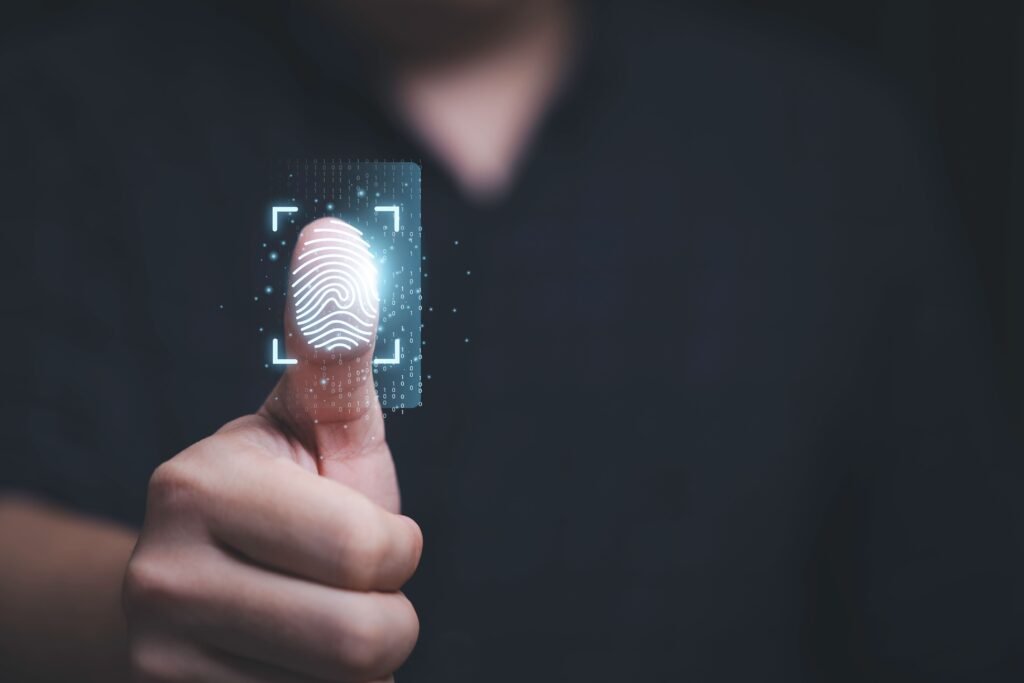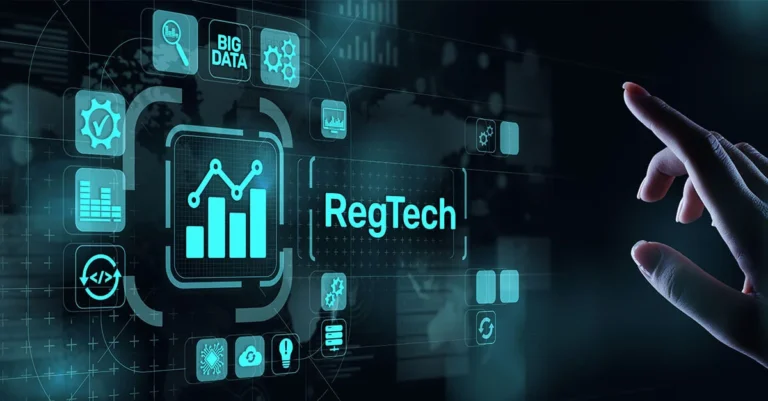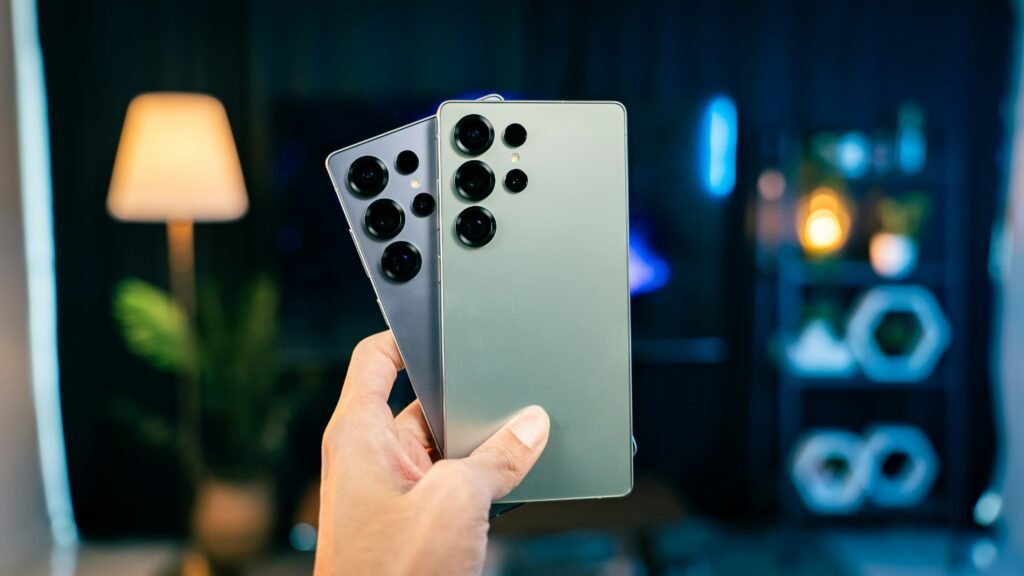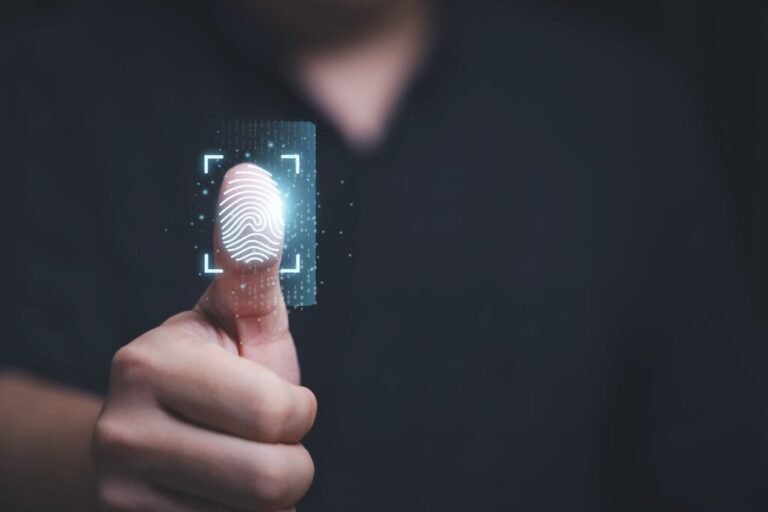
Technology has been influencing the way we interact with the world for centuries, especially when it comes to financial transactions. From cash purchases to credit cards and mobile payments, we are constantly changing. But what’s happening now? Biometric payments are quickly becoming the safest, most seamless, and most innovative way to conduct financial transactions. This modern technology offers unparalleled security and enhances the customer experience by increasing convenience and efficiency.
This article will explore biometric payments, their function, advantages, disadvantages, and their potential role in fintech’s future. You’ll gain a deeper understanding of why biometric payments are considered the next significant advancement in secure transactions.
What is a Biometric Payment?
Biometric payments are payments that use unique biological characteristics such as fingerprints, facial recognition, voice patterns, or even iris scans to authorize and complete financial transactions. Biometric payments use a person’s unique identifiers to verify their identity, rather than relying on traditional PINs, passwords, or even physical devices like credit cards. This technology eliminates the need to remember complicated passwords, carry multiple cards, and worry about hackers breaching the security of our accounts. It offers an unparalleled combination of simplicity and security and is a revolutionary advancement in the world of fintech.
The Evolution of Payment Technology:
After years of development, the evolution of payment technology has paved the way for biometric payments, paving the way for this future payment method. Many years ago, cash was the primary means of payment, and physical money dominated the global market. The subsequent rise of credit and debit cards made carrying and spending money easier. As the internet grows, online payments and digital wallets are becoming increasingly popular, offering speed and convenience.
Soon after, mobile payments emerged, allowing people to make transactions using their mobile phones. While these developments have solved specific problems, they have also created new challenges, including fraud, identity theft, and complex security breaches. Biometric payments are the next step in this timeline, building a robust system based on the uniqueness of individuals will address these issues.
How Biometric Payment Systems Work:
Biometric payments are essentially based on the use of advanced technology to identify and authenticate people based on their physical or biological characteristics. Using cryptographic techniques, a user’s unique biometric data can be captured and securely stored as part of a biometric payment system. During transactions, this stored data is compared to the user’s real-time biometric data (e.g., a fingerprint or facial image). If the input matches the stored data, the transaction is authorized. Because biometrics are virtually impossible to copy, the entire process takes just seconds, reducing the chance of identity theft or fraud. Biometric solutions provide fast, secure, and correct authentication, whether it’s a fingerprint sensor at in-store checkouts or facial recognition for smartphone payments.
Biometric Payment System Form:
Different biometric payment systems offer different solutions for different types of customer interactions. Fingerprint scanning is one of the most widely used technologies, as smartphones and biometric point-of-sale (POS) terminals can scan fingerprints. Facial recognition is another popular option, especially for systems with advanced cameras that can identify precise facial features. Although less common, voice recognition is becoming increasingly popular for contactless payments and customer support, including phone transactions. Because no two irises are genetically the same, iris scanning offers the highest level of security. Finally, emerging technologies such as DNA-based identification and palm vein scanning show that new biometric solutions hold enormous promise for transforming the financial system.
Benefits of Biometric Payments:
Biometric payments have many benefits that make them the future trend for secure fintech transactions. The most obvious benefit is improved security. Unlike a PIN or password, each person’s biometric data is unique and virtually impossible to forge, reducing the risk of fraud. The technology also provides a much greater level of convenience by streamlining transactions and eliminating the need to carry physical items such as cards or phones. Another key benefit is transaction speed. Fast biometric authentication systems improve the consumer experience by reducing wait times at checkout or when making purchases via an app. Companies that use biometrics can also perform in-depth analyses of consumer behavior (while still complying with privacy laws), allowing them to provide more customized solutions.
Challenges and Concerns:
Despite the significant advances in biometric payments, there are still some challenges and questions. Data security and privacy are key issues. Biometric data stored digitally is an attractive target for attackers. Unlike passwords, biometrics are unchangeable, making the consequences of leakage extremely serious. Another challenge is the cost of implementing the technology. For small businesses, the requirements for specialized hardware and software for a high-end biometric system can be prohibitive. There are also ethical issues surrounding the use, storage, and potential misuse of biometric data. Developers and businesses must address these issues through secure storage, data anonymization, and strict GDPR compliance to enable widespread adoption.
Biometric Payments Across Industries:
The potential applications of biometric payments in various areas demonstrate their adaptability and broad appeal. Biometric POS systems in retail streamline in-store transactions and enable faster and more secure purchases. The healthcare industry is using biometrics for patient payments, streamlining billing, and ensuring security. Biometric technology is also transforming the travel and hospitality industries by enabling seamless airport check-ins and hotel bookings. Key players in this change include financial institutions that are using biometric authentication for online banking, ATM withdrawals, and credit card transactions. Even industries such as subscription-based platforms and online gaming are exploring biometric solutions to instantly confirm user identity and prevent fraud.
The Future of Biometric Payments:
Biometric payments undoubtedly have a bright future. Advances in machine learning and artificial intelligence promise to make biometric systems more adaptable and accurate. We may soon witness the widespread adoption of multimodal biometrics, which combines multiple attributes such as voice and facial recognition to provide an even higher level of protection. We anticipate the expansion of biometric payment systems to underbanked and rural areas, thereby enhancing global access to financial services.
These payment methods could become the standard for financial transactions as businesses continue to innovate to reduce implementation costs and governments pass laws to protect biometric data. Ultimately, the development of biometric technology heralds a future shift in security, convenience, and personalization.
FAQs:
1. How are biometric payments different from traditional payment methods?
Biometric payments use an individual’s biometric characteristics, such as fingerprints or facial recognition, to authenticate and complete transactions. Unlike traditional technologies that use PINs or passwords, biometrics use non-replicable human characteristics to increase security.
2. Are there risks associated with biometric payments?
Because biometric payments rely on an individual’s physical characteristics, they are extremely secure. Encrypted storage and advanced authentication techniques prevent hackers from accessing and misusing biometric data.
3. Which industries are leading the way in using biometric payments?
Industries such as retail, banking, healthcare, travel, and hospitality are leading the way in implementing biometric payment systems due to their security and efficiency benefits.
4. Are biometrics easy to hack?
While biometrics are often encrypted for protection, no system is completely immune to attack. However, developments in data protection and cybersecurity legislation have significantly improved security.
5. Is it expensive to implement a biometric payment system?
While technical expertise makes implementing biometric payment systems expensive, falling costs and increasing competition are making this innovation more accessible to businesses of all sizes.






